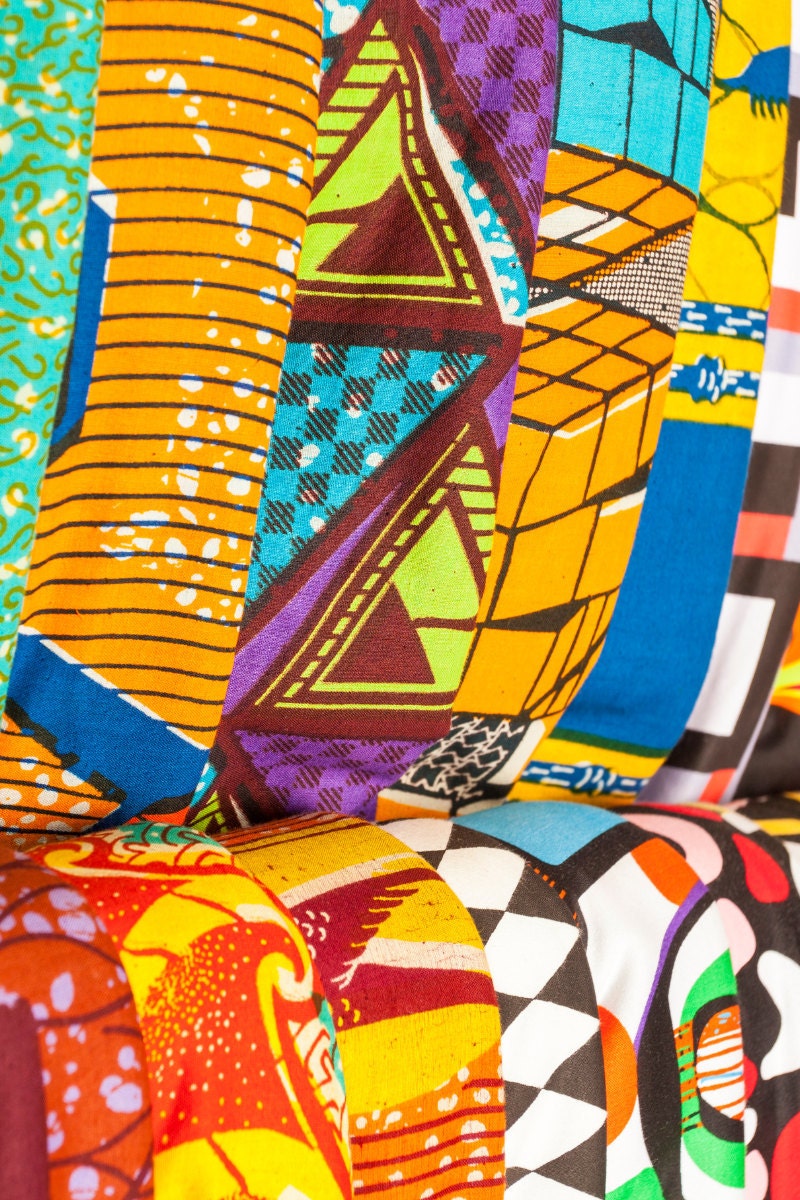Ankara fabric, also known as African print or wax print, holds a rich and vibrant history deeply intertwined with the African cultural heritage. This iconic fabric has transcended time and borders, captivating people across the globe with its bold patterns, vibrant colors, and symbolism. Let's delve into the fascinating traditions behind Ankara fabric, exploring its origins, cultural significance, and evolving role in contemporary fashion.
Ankara fabric traces its origins back to the 19th century, during the colonial era in Africa. It emerged as a result of Dutch traders introducing Indonesian batik fabrics to West Africa. Over time, African artisans began to infuse their own cultural motifs, symbols, and colors into the fabric, transforming it into a distinctive African textile. Ankara fabric quickly became a symbol of African cultural identity and resistance against colonial rule. It played a significant role in preserving and celebrating African traditions, as people incorporated the fabric into their everyday clothing, ceremonial attire, and cultural festivals. Ankara fabric became a visual language through which individuals could express their pride in their heritage, tribal affiliations, and social status.
Each Ankara fabric design carries symbolic meanings that reflect the cultural values and beliefs of different African communities. The patterns can represent various aspects of life, such as fertility, wealth, love, and spirituality. For example, the "Kente" design from Ghana features intricate geometric patterns that symbolize royalty, leadership, and cultural prestige. Moreover, Ankara fabric often showcases symbols derived from African proverbs, historical events, or local folklore, providing a visual narrative that connects generations and preserves ancestral wisdom. The vibrant colors used in Ankara prints are also significant, with red representing passion and energy, green symbolizing fertility and growth, and yellow representing wealth and prosperity.
In recent years, Ankara fabric has experienced a renaissance, transcending traditional uses and finding its place in contemporary fashion and design. Renowned fashion designers and global brands have embraced the beauty and versatility of Ankara fabric, incorporating it into their collections and runway shows. This resurgence has helped to amplify the appreciation and recognition of African textile traditions worldwide. Ankara fabric has now become a symbol of multiculturalism and a bridge between different cultures. It is no longer limited to African communities but has been embraced by individuals from various backgrounds who appreciate its vibrant aesthetics and cultural significance. The fusion of Ankara fabric with modern designs has given rise to an exciting blend of tradition and innovation, creating unique pieces that celebrate diversity and individual expression.
While Ankara fabric continues to evolve and adapt to modern trends, it is crucial to preserve its traditional roots and cultural significance. African designers, artisans, and entrepreneurs play a vital role in ensuring the sustainability of Ankara fabric traditions. They strive to uphold authentic production methods, support local artisans, and promote ethical sourcing of materials. Furthermore, initiatives are emerging to educate people about the significance of Ankara fabric and its connection to African heritage. Workshops, exhibitions, and cultural events provide platforms to showcase the beauty and craftsmanship behind these textiles, fostering a deeper appreciation for their cultural and historical value.
Ankara fabric stands as a testament to the resilience and creativity of African traditions. Its vibrant colors, intricate patterns, and cultural symbolism have captured the imagination of people worldwide. As we continue to celebrate Ankara fabric's enduring legacy, let us cherish and support the artisans and designers who keep these traditions alive, ensuring that future generations can experience the beauty and depth of African print in all its glory.

